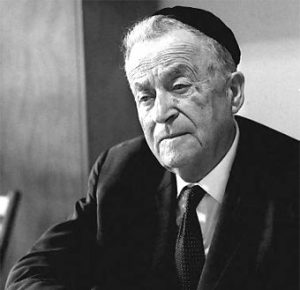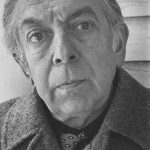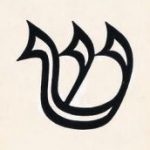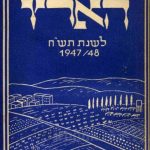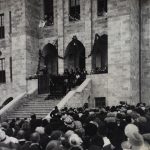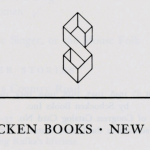Shmuel Yosef Agnon
Schocken first met the future Nobel Prize laureate S.Y. Agnon in 1914, when the latter was 26 years old. Inspired by the young author’s vision of a Hebrew literary renaissance, Schocken began supporting Agnon and exuding personal advice. During a close relationship that lasted forty years, the two men carried on a lively correspondence about scholarly and daily affairs. It is evident from their vast correspondence that Schocken was determined to expand Agnon’s vast intellectual jewish knowledge to include German literature and thought. (The Agnon-Schocken correspondence was published by Schocken Publishing House in 1991).
Schocken made many efforts to find a German publisher who would agree to translate and publish Agnon’s fiction, with no success (fifty years later, Agnon’s books have been translated into more than 60 languages). These rejections became a motivation for starting up his own publishing house. “I assume that you will greet the news with joy”, he wrote Agnon, “when I tell you that I’ve decided to publish your works in my own publishing house. Indeed, I have decided to establish a Jewish publishing house to print German and Hebrew books.”
Eventually, Schocken published Agnon’s works in Berlin, Tel Aviv, and New York. Over the years, Schocken lobbied the Swedish Academy on behalf of Agnon. He sent them packets of all of Agnon’s works, both in Hebrew and in translation, and lobbied Swedish representatives around the world. Schocken’s efforts bore fruit seven years after his death, when Agnon won the Nobel prize in literature in 1966. During that time Agnon’s fame was such that when he complained to the Jerusalem municipality that traffic noise near his home was disturbing his work, the city closed the street to cars and posted a sign that read: “No entry to all vehicles, author at work!”
